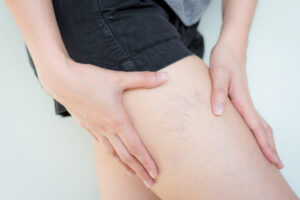PAD is one of the top causes of limb loss in this country. And that's a big deal, since over 2 million people in the United States are living with limb loss. In fact, in our very own state, residents of Laredo have the third highest rate of amputations, many due to complications of peripheral artery disease. If those statistics sound scary, consider this: by the year 2050, an estimated 3.6 million people will have a lost limb.
Now, vascular conditions are responsible for the most amputations in this country. But they aren’t the only problem. Other causes of limb loss include trauma, cancers and birth defects.

A year-long study by the Physical Medicine and Rehabilitation Clinics of North America uncovered frightening stats.
What’s the connection between these big three problems? Let’s take a closer look. Diabetes is a condition in which your body’s ability to produce or respond to insulin is impaired.
When diabetes is poorly controlled, glucose can build up in the blood stream and contribute to the development of plaque, a substance that can narrow your arteries and reduce blood flow, usually to your legs and feet.
Built-up glucose isn't all that contributes to plaque. High cholesterol levels are also part of the problem. Your liver produces cholesterol to help regulate your metabolism. But when it produces too much of this waxy substance, cholesterol can combine with glucose and other substances to create plaque buildup. And that's when your blood flow can be affected.
One of the earliest signs of a problem is when your toenail growth slows down. Brittle toenails can also be a problem, along with loss of leg hair, shrunken muscles, or even erectile dysfunction in men. But all of these are merely symptoms of the main problem--reduced blood flow to your extremities.
In fact, that’s the definition of PAD—a condition that sets in when blood vessels develop atherosclerosis (built up plaque) inside the vessel walls The plaque narrows the vessels narrower, slowing blood flow. If a blockage hardens it is more likely to burst and cause a blood clot to develop. A clot may completely block your artery, which cuts off blood flow to your legs and feet. If that occurs, a few things could happen.
Because of the reduction in blood flow that comes with PAD, the vascular condition is a risk factor for foot ulcers (deep wounds that just won’t heal), and foot ulcers frequently lead to foot and lower limb amputations, especially in diabetic patients. In severe instances, where all blood flow to the legs and feet is blocked, gangrene can take hold in your limbs and lead to an amputation before you even see an ulcer or any other warning sign.
Are you starting to get the picture? Each condition feeds into the next, putting individuals at major risk of losing vital limbs.
We have to diagnose your PAD before offering treatment. Because, without a comprehensive vascular exam, available in our Houston and Dallas offices, it’s difficult to spot PAD. After all, PAD symptoms can imitate other problems, so this condition is often misdiagnosed or not caught at all!
Some PAD treatments may involve surgery to transplant healthy veins from somewhere else in your body. You may also need to treat the underlying causes of your PAD. So treatment could include prescription medications to manage blood pressure and cholesterol. You may even need blood thinners to help improve blood flow to your legs.
But in our office, we try to help you find relief in the safest way possible. Once you know that you have PAD, we can determine a treatment plan: interventions may be as simple as recommending lifestyle changes like a better diet and more exercise. Depending on the progression of the disease, our vascular specialists may recommend unblocking your arteries through one of our minimally invasive interventional radiology treatments.
Our goal as vascular specialists is to protect your vein health and your limbs. Know the risks of PAD and, if you believe you may have this condition, request a consultation request a consultation request a consultation with our specialists in Dallas and Houston. One simple exam could keep you from becoming part of this country’s growing group of limb loss victims.

Scheduling
Please contact our dedicated specialists to schedule a consultation today.
2024 Texas Endovascular. All rights reserved. Website Design by Healthcare Success